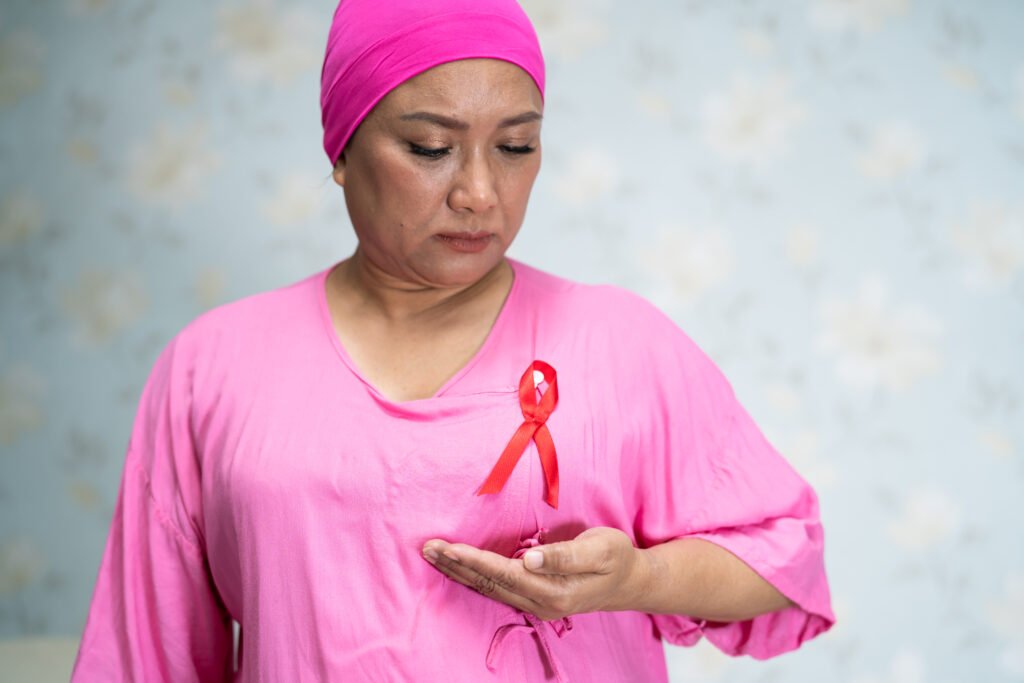Breast cancer is a formidable opponent, affecting millions of lives worldwide. While it is a serious health concern, early detection and advances in medical science have made a significant impact in the fight against breast cancer. In this article, we will delve into the world of breast cancer, exploring its causes, risk factors, symptoms, diagnosis, treatment options, and the importance of awareness and prevention in promoting breast health and well-being.
- Breast Cancer: An Overview
Breast cancer is a type of cancer that originates in the cells of the breast tissue. It can affect both men and women, but it is far more common in women. Breast cancer can begin in different areas of the breast, such as the ducts that carry milk to the nipple (ductal carcinoma) or the lobules that produce milk (lobular carcinoma).
- Risk Factors for Breast Cancer
While the exact cause of breast cancer remains unknown, certain risk factors may increase the likelihood of its development:
- Gender and age: Being a woman and advancing age are the primary risk factors for breast cancer.
- Family history: Having a close relative (parent, sibling, or child) with breast cancer may increase the risk, especially if the relative was diagnosed at a young age.
- Genetic mutations: Inherited mutations in certain genes, such as BRCA1 and BRCA2, can significantly increase the risk of breast cancer.
- Personal history: A history of breast cancer or certain non-cancerous breast diseases can raise the risk of future breast cancer.
- Hormone replacement therapy: Long-term use of hormone replacement therapy after menopause may increase the risk of breast cancer.
- Reproductive factors: Early menstruation, late menopause, and never having children or having children later in life can be associated with a higher risk.
- Lifestyle choices: Factors such as alcohol consumption, smoking, and sedentary lifestyles may contribute to an increased risk of breast cancer.
- Recognizing Breast Cancer Symptoms
Detecting breast cancer at an early stage significantly improves the chances of successful treatment. Familiarizing yourself with common symptoms can help prompt early evaluation:
- New lump or mass: A painless, hard mass or lump in the breast or armpit area is a common sign.
- Changes in breast size or shape: Noticeable changes in breast size or shape, including swelling or dimpling, should be evaluated.
- Skin changes: Redness, scaliness, or thickening of the breast skin, similar to an orange peel, may be a warning sign.
- Nipple changes: Inverted nipples, discharge (other than breast milk), or persistent tenderness or pain should be investigated.
- Breast pain: While most breast pain is not associated with breast cancer, unexplained persistent pain should be checked.
It’s important to remember that some breast cancer cases may not cause any symptoms, underscoring the significance of regular screenings and self-examination.
- Screening and Early Detection
Early detection plays a pivotal role in the successful treatment of breast cancer. Regular breast self-examinations, clinical breast examinations by healthcare professionals, and mammograms are key components of early detection efforts.
- Breast self-examination (BSE): Women should perform BSE regularly to become familiar with the normal texture and feel of their breasts. Any changes or abnormalities detected during BSE should be promptly reported to a healthcare provider.
- Clinical breast examination (CBE): Healthcare professionals perform CBE during routine check-ups to identify any potential breast abnormalities.
- Mammograms: Mammography is an X-ray of the breast tissue used to detect changes or abnormalities that may be too small to feel. Regular mammograms are recommended for women starting at age 40 or earlier, depending on individual risk factors.
- Breast Cancer Diagnosis
If a lump or abnormality is detected during screening or self-examination, further diagnostic tests may be required:
- Diagnostic mammogram: A diagnostic mammogram provides more detailed images of the breast tissue to evaluate the extent and nature of any abnormalities.
- Ultrasound: An ultrasound can help determine if a lump is solid or fluid-filled.
- MRI (Magnetic Resonance Imaging): MRI may be used in certain cases to obtain additional information about the breast tissue.
- Biopsy: A tissue sample is obtained from the suspicious area to determine if it is cancerous or non-cancerous.
- Stages and Treatment Options
Breast cancer is categorized into different stages based on the extent of its spread. The treatment approach will depend on the stage, type of breast cancer, and individual factors. Treatment options may include:
- Surgery: Surgical options include lumpectomy (removal of the tumor and surrounding tissue) or mastectomy (removal of the entire breast).
- Radiation therapy: High-energy rays are used to target and kill cancer cells.
- Chemotherapy: Medications are used to kill cancer cells or prevent their growth and spread.
- Hormone therapy: Certain types of breast cancer are hormone receptor-positive, meaning they are influenced by hormones like estrogen and progesterone. Hormone therapy blocks the effects of these hormones or lowers their levels to slow or stop cancer growth.
- Targeted therapy: Targeted drugs attack specific abnormalities within cancer cells without harming normal cells.
- Immunotherapy: This approach uses the body’s immune system to target and destroy cancer cells.
- Coping with Breast Cancer
A breast cancer diagnosis can be overwhelming and emotionally challenging. Coping with the diagnosis and treatment may require a comprehensive support system, including family, friends, healthcare professionals, and support groups. Many individuals find solace in connecting with others who have experienced similar journeys.
Engaging in self-care, maintaining a positive outlook, and seeking professional counseling when needed can all contribute to emotional well-being during this challenging time.
- The Power of Breast Cancer Awareness
Breast cancer awareness campaigns play a critical role in promoting early detection, dispelling myths, and encouraging open conversations about breast health. Awareness initiatives also raise funds for research, helping to improve treatment options and enhance the quality of life for those affected by breast cancer.
- The Role of Lifestyle in Breast Cancer Prevention
While certain risk factors for breast cancer are beyond our control, lifestyle choices can significantly impact our risk:
- Maintain a healthy weight: Being overweight or obese is associated with an increased risk of breast cancer, especially after menopause.
- Regular physical activity: Engaging in regular exercise can reduce breast cancer risk.
- Limit alcohol consumption: Alcohol intake is linked to an increased risk of breast cancer, so moderation is key.
- Avoid smoking: Smoking is associated with various health risks, including an increased risk of breast cancer.
- Breastfeeding: For mothers who can breastfeed, doing so may have a protective effect against breast cancer.
Breast cancer is a formidable adversary, impacting millions of lives globally. However, awareness, early detection, and advances in medical science have transformed the prognosis for many individuals facing this disease. Empowering ourselves and others with knowledge about breast health, risk factors, and early detection strategies is key to promoting early diagnosis and improving outcomes.
As we stand united in the fight against breast cancer, let us continue to support awareness initiatives, advocate for regular screenings, and emphasize the importance of lifestyle choices in promoting breast health. By working together, we can continue making strides in breast cancer prevention, treatment, and the pursuit of a future where breast cancer is no longer a threat to the lives and well-being of millions.



